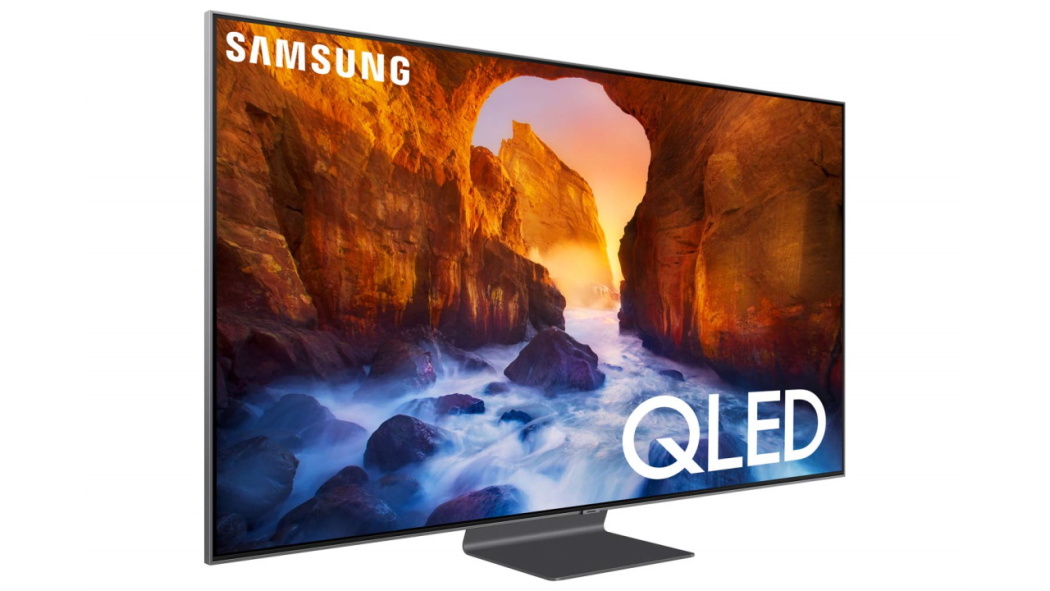Samsung’s efforts to advance LCD technology have proven remarkably successful. Samsung believes that LCD and, eventually, MicroLED are required to produce today’s ultra-bright HDR content, while its Korean rival LG has committed billions in creating OLED.
Although mainstream MicroLED is still a few years away, Samsung has achieved substantial breakthroughs in LCD, a decades-old technology. Through numerous improvements, the company has been gradually resolving specific restrictions in LCD panel design, resulting in a superior product.
VA panels, direct LED backlights, and local dimming have all been used to provide better blacks, brighter highlights, and improved contrast. Samsung has lately embraced quantum dot technology, resulting in additional hues and putting the Q in QLED.
The company now believes it has overcome the last major constraint of LCD technology by expanding the optimal viewing angles. The Samsung Q90R, the brand’s flagship TV for 2019, is the result of these innovations.
Samsung Q90 price and release date
The Q90 is available in four screen sizes in the United Kingdom: 55-inch (QE55Q90R), 65-inch (QE65Q90R), 75-inch (QE75Q90R), and 82-inch (QE82Q90R) (QE82Q90R).
The Q90 is only available in three sizes in the United States: 65-inch QN65Q90RAFXZA, 75-inch QN75Q90RAFXZA, and 82-inch QN82Q90RFXZA, with the 65-inch model presently priced at $2,599 (down from $3,499).
In the UK, meanwhile, a 55-inch model starts at £1,699, with 65-inch and 75-inch models also available.
We’ll update this review as we hear more about pricing and availability in Australia, India, and the United Arab Emirates.
Design
With a simple aesthetic that looks beautiful from all angles, the Samsung Q90 continues the company’s 360-degree design approach. The bezel-less screen has a simple elegance to it, with a nice brushed metal accent around the edge. The back panel contains textured grooves that assist disguise the cable that connects the One Connect box while also making the back view more appealing.
The Q90 is supported by a rather classic stand that compliments the overall design and provides robust stability. Anyone intending to mount this TV on an existing equipment stand will appreciate the lower size. There’s a removable panel at the back with screws for the optional ‘No-Gap’ bracket if you want to wall mount it.
On the back of the Q90, there’s simply only one connector; everything else is in the One Connect box. There are four HDMI 2.0b inputs, three USB ports (two 2.0 and one 3.0), twin terrestrial and satellite tuners, a CI slot, an external link for auto calibration, an optical digital input, and a LAN port for a cable connection (but built-in WiFi and Apple AirPlay are also available).
Interestingly, the Q90 does not support HDMI 2.1, yet it can still handle most tasks. There’s 4K at up to 120Hz, dynamic metadata (HDR10+), variable refresh rate (VRR), and an auto low latency mode, among other features (ALLM). The Q90 currently lacks an enhanced audio return channel (eARC), however it isn’t required at this time and could be added later.
Sound
The Q90 has a direct LED backlight, so it’s a little thicker than most ultra-thin TVs these days. Samsung can fit four speakers, two subwoofers, and 60W of amplification within the panel as a result of the added depth. As a result, the Q90’s audio performance was exceptional, with good stereo separation, well-defined midrange and upper frequencies, crisp conversation, and deeper bass.
Samsung has also introduced machine learning to the TV’s audio this year, with the Intelligent Sound option automatically altering the volume based on the environment and content. This increases the width and depth of the sound coming from the TV and improves the speaker output to create a more defined and immersive experience.
The audio comes alive as soon as you put on Intelligent Sound, and when watching a football match, the commentator is clear but the crowd is much more engulfing. The music and effects in a movie are well-defined, while the dialogue remains focused on the screen. When you’re playing a game, the processing precisely puts effects at the front of the room.
The Q90 does not support Dolby Atmos, which puts it at a disadvantage compared to many other TVs on the market. To be honest, a TV with stereo speakers can only do so much in terms of delivering an object-based mix, but the Q90 can transport Dolby Atmos from built-in apps like Netflix to compatible soundbars through HDMI audio return.
